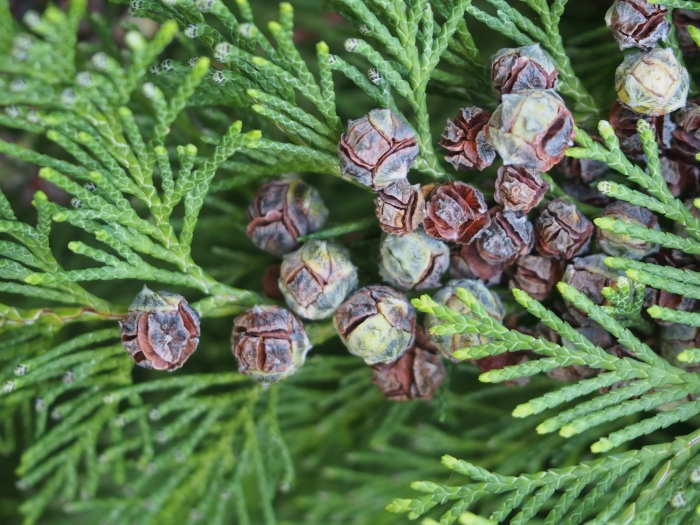Port Orford Cedar
(Chamaecyparis lawsoniana)
Port Orford Cedar (Chamaecyparis lawsoniana)
/
/

Agnieszka Kwiecień, Nova
CC BY-SA 4.0
















































































Estimated Native Range
Summary
Port Orford Cedar is valued for its elegant, lacy foliage and its adaptability to a range of garden settings. It is often used in parks and large gardens for its visual appeal and as a windbreak or privacy screen. This species prefers well-drained, acidic to neutral soils and can tolerate some drought once established. It is important to provide protection from strong winds and to ensure adequate space for its mature size. Cultivars offer variations in form and foliage color, enhancing its use in landscape design. However, it can be susceptible to root rot and other fungal diseases, and care should be taken to avoid overly wet conditions. Additionally, it is considered invasive in some regions outside its native range, so local regulations should be consulted before planting.CC BY-SA 4.0
Plant Description
- Plant Type: Tree
- Height: 110-175 feet
- Width: 30-60 feet
- Growth Rate: Moderate
- Flower Color: N/A
- Flowering Season: Non-Flowering
- Leaf Retention: Evergreen
Growth Requirements
- Sun: Full Sun, Part Shade
- Water: Medium
- Drainage: Fast, Medium, Slow
Common Uses
Bird Garden, Border Plant, Deer Resistant, Drought Tolerant, Fragrant, Hedges, Low Maintenance, Potted Plant, Rabbit Resistant, Rock Garden, Salt Tolerant
Natural Habitat
Moist forests, river valleys, and mountain slopes in the Pacific Northwest
Other Names
Common Names: Lawson Cedar, Oregon Cedar, Port Orford White Cedar, Ginger-Pine, Lawson Cypress, Lawson’s False Cypress, Port Orford-Cedar, Oregon-Cedar, Lawson-Scheinzypresse, Cyprès De Lawson
Scientific Names: , Chamaecyparis lawsoniana, Cupressus lawsoniana, Chamaecyparis lawsoniana f. filiformis, Chamaecyparis lawsoniana f. intertexta, Chamaecyparis lawsoniana var. glauca, Chamaecyparis lawsoniana f. lutea, Chamaecyparis lawsoniana var. aurea, Chamaecyparis lawsoniana var. stewartii, Chamaecyparis lawsoniana f. aluminii
GBIF Accepted Name: Chamaecyparis lawsoniana (A.Murray bis) Parl.